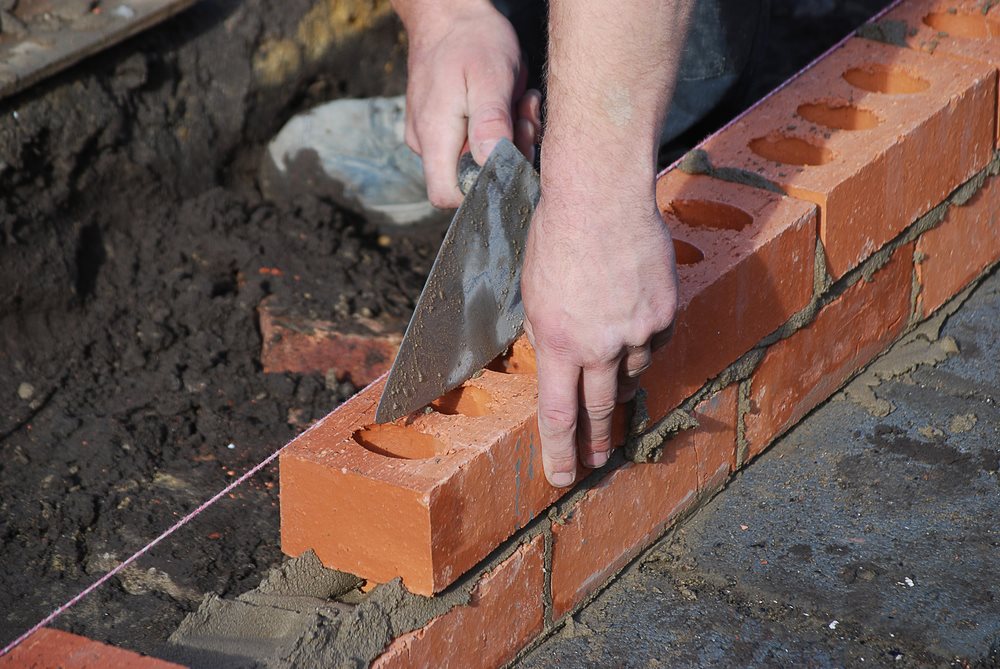Bricklayer
Contents |
[edit] Introduction
A bricklayer is a craftsperson who lay bricks, generally with mortar, to create finished construction works, such as walls, chimneys, parapets, spandrel panels and so on. In the UK and Australia, bricklayers are colloquially referred to as ‘brickies’.
Bricklayers also repair and maintain masonry structures and will also often be skilled in laying concrete blocks, as constructing a cavity wall, for example, will usually involve parallel brick and block wall components.
The bricklayer’s profession ranks among one of the oldest – bricks have been excavated at Jericho, Israel that date from around 8,000 BC. The Egyptians and Romans were keen bricklayers, as have been the British, who have used brick almost continuously from the 15th century. The bricklayer’s art was refined and taken to new heights by the Victorians in the 19th century.
From 2000 onwards, the UK has experienced a severe shortage of bricklayers at a time when the ‘education education, education’ mantra of the Labour government highlighted the desirability of a university education. By implication, trades occupations were perceived to have a much lower social status. This encouraged many more students to take up full-time university courses and fewer to go into trades. The result was a shortages not only of bricklayers, but also plumbers, plasterers, carpenters and other building trades. So much so, that the lack of skilled workers has held back building work and increased labour costs. For more information see: Skills shortage.
[edit] Training
A bricklaying apprenticeship is normally of three or four years in duration. It normally involves a mix of four days a week on site and one day a week at a training college where the theory of bricks and bricklaying, and honing of skills is learnt. It is also possible to be a bricklayer by learning the craft from a skilled craftsperson – this was the traditional way into the trade – but this route does not deliver any qualifications and so is not generally encouraged.
[edit] Qualities needed
Laying bricks can be a demanding occupation that requires heavy, physical working in all weathers. As well as enjoying working outdoors, aspiring bricklayers will be required to:
- Have a good level of fitness.
- Have good hand-to-eye co-ordination.
- Pay great attention to detail.
- Be good communicators.
[edit] Skills needed
Dexterity in the use of tools and materials is a prerequisite. As well as mastering the art of laying bricks and blocks, a bricklayer must:
- Have a feel for the right mortar mix and consistency according to the brick type and prevailing temperature;
- Understand the steelwork that is necessary in modern brickwork and be familiar with its installation e.g wall ties, angles, expanded metal lathe (EML), sliding anchor ties etc;
- Be able to set-out work;
- Be able to measure and cut materials accurately;
- Understand movement joints and their correct installation;
- Use specialist tools and equipment such as a cement mixer;
- Accurately cut and position damp-proof courses.
- Understand the use, performance and applicability of various mortar profiles, e.g flush, bucket handle, recessed, etc, and
- Be proficient in creating brickwork in various bonds such as English, Flemish, garden wall bond etc.
[edit] Related articles on Designing Buildings Wiki
- Airbrick.
- Blockwork.
- Bond stone.
- Brick strip foundation.
- Brick veneer.
- Brick wall.
- Cavity tray.
- Cavity wall.
- Damp-proof course.
- Defects in brickwork
- Efflorescence.
- Fly ash.
- How to lay bricks.
- Mortar.
- Parapet.
- Perpend.
- Pointing.
- Spalling.
- Terracotta.
- Types of brick bonding.
- Types of bricks.
- Which way up should you lay a brick?
- Wall tie failure.






